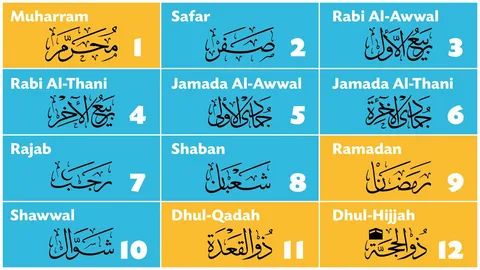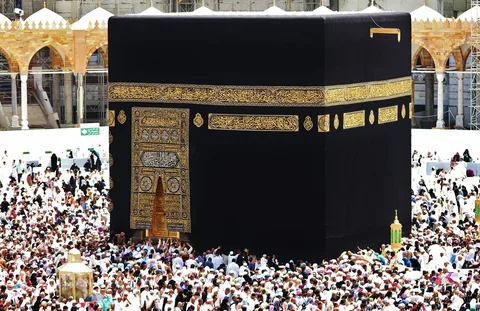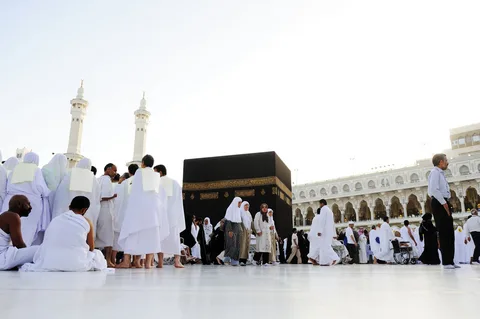Hajj, one of the five pillars of Islam, is a mandatory religious duty for Muslims that must be carried out at least once in their lifetime by all adult Muslims who are physically and financially capable of undertaking the journey and can support their family during their absence. It is a demonstration of the solidarity of the Muslim people, and their submission to God (Allah), in this article on Arabian Tongue we will explorer when is hajj in islamic calendar.
Understanding the Islamic Calendar

The Islamic calendar, or Hijri calendar, is a lunar calendar consisting of 12 months in a year of 354 or 355 days. It is used to determine the proper days of Islamic rituals such as the period of fasting and the proper time for the pilgrimage to Mecca, the Hajj.
when is hajj in islamic calendar
Dhul-Hijjah: The Month of Hajj, Dhul-Hijjah is the twelfth and final month of the Islamic calendar. It is during this month that the Hajj takes place. can we fast The first 10 days of Dhul Hijjah are considered some of the most sacred days in Islam, with the Day of Arafah, the ninth day, being particularly important.
The Timing of Hajj
Hajj rituals specifically take place from the 8th to the 12th day of Dhul-Hijjah. However, the exact timing can vary each year when translated into the Gregorian calendar, due to the lunar nature of the Hijri calendar.
The Rituals of Hajj

The Hajj pilgrimage is a profound and structured act of worship that Muslims are required to perform at least once in their lifetime if they are physically and financially capable. The wajibat of Hajj are performed over several days in and around Mecca, Saudi Arabia, during the Islamic month of Dhul-Hijjah. Here is a detailed look at these rituals:
- Entering Ihram: State of Purity The first step in performing Hajj is entering a state of Ihram, which involves a series of intentions and physical preparations that symbolize purity and unity among pilgrims. Men wear two simple white cloths, while women wear plain, modest clothing.
- Niyyah (Intention): Before crossing the outer boundaries of Mecca, known as Miqat, pilgrims make their Niyyah or intention to undertake the pilgrimage.
- Tawaf: Circumambulation of the Kaaba: Upon arrival in Mecca, pilgrims perform Tawaf, which involves circling the Kaaba seven times counterclockwise. This act demonstrates the unity of the believers in the worship of the One God, as they move in harmony together around the Kaaba.
- Sa’i: Walking between Safa and Marwah Following Tawaf, pilgrims perform Sa’i, walking seven times between the hills of Safa and Marwah. This ritual commemorates Hagar’s search for water for her son Ishmael. This act symbolizes the ritualistic trial and the relentless faith in God.
- Day of Arafat (Wuquf): Standing at ArafatThe 9th day of Dhul-Hijjah is known as the Day of Arafat. Pilgrims gather at the plain of Arafat and spend the afternoon there in prayer and reflection, which is considered the most critical phase of the Hajj. Standing at Arafat epitomizes the climax of Hajj and is a reminder of the Day of Judgment.
- Muzdalifah: Collecting Pebbles After sunset on the Day of Arafat, pilgrims move to Muzdalifah, an open area between Arafat and Mina. Here, they collect pebbles for the stoning of the devil, spend the night under the open sky, and offer various prayers.
- Rami al-Jamarat (Stoning of the Devil): Symbolic act Over the next few days, pilgrims throw stones at three walls in Mina, known as Jamarat, which represents the devil. This act commemorates Abraham’s rejection of Satan’s temptation as he was commanded by God to sacrifice his son.
Why the Date of Hajj Changes Every Year
Since the Islamic calendar is lunar, it is shorter than the solar-based Gregorian calendar by approximately 10 to 12 days each year. This discrepancy causes the Hajj season to move each year.
Preparing for Hajj
Preparing for Hajj, the annual Islamic pilgrimage to Mecca, involves spiritual, physical, and logistical preparations. It is a profound journey that requires careful planning to ensure a fulfilling and safe experience. Here’s a guide on how to prepare for Hajj:
1. Spiritual Preparation
- Intention (Niyyah): The journey of Hajj should be undertaken with a clear intention of fulfilling this religious duty solely for the sake of Allah. Purify your intentions and focus on the spiritual aspects of the pilgrimage.
- Seek Knowledge: Learn about the rituals of Hajj, their significance, and the correct way to perform them. Reading books, attending seminars, or consulting with religious scholars can be beneficial.
- Regular Prayer: Increase your daily worship and recitation of the Quran to spiritually prepare yourself for the journey.
2. Physical Preparation
- Health Check-up: Given the physically demanding nature of Hajj, consult a healthcare provider for a general check-up. Discuss vaccinations required for entry into Saudi Arabia.
- Physical Fitness: Start a moderate fitness regime months before Hajj to build stamina. The rituals involve a lot of walking and being on your feet for extended periods.
- Diet and Hydration: Adopt a healthy diet to boost your immune system. Stay hydrated, especially since Hajj occurs in a desert climate.
3. Logistical Preparation
- Travel Documents: Ensure your passport is valid for at least six months from the time of travel. Apply for a Hajj visa through an approved Hajj travel agent.
- Accommodation and Transportation: Book your accommodations and transportation well in advance. Hajj packages often include these, but it’s important to confirm all details and the itinerary.
- Packing: Pack light and include essential items such as comfortable clothing, prayer mats, toiletries, medicines, and snacks. Women should bring the required attire that respects the Islamic dress code.
4. Financial Preparation
- Budgeting: Ensure you have budgeted for all aspects of the trip, including travel, accommodation, food, and any additional expenses. Consider carrying some extra money for emergencies.
- Zakat (Charity): It is customary to settle all debts and perform acts of charity before leaving for Hajj.
5. Ethical and Social Preparation
- Resolve Conflicts: It is advised to seek forgiveness from those you may have wronged and resolve any interpersonal conflicts.
- Inform and Educate Family: If you are travelling without your family, ensure they are well-informed about your itinerary and what to expect in your absence.
6. Learning Practical Skills
- Language Basics: Learning basic Arabic phrases can be incredibly helpful. Phrases for directions, emergencies, and common courtesy can ease your navigation through the crowd.
- Safety Protocols: Familiarize yourself with the safety guidelines provided by your Hajj group leader and adhere to them during the pilgrimage.
FAQs
Why is Hajj performed only once a year?
Hajj is tied to specific Islamic lunar months and days, which are believed to hold unique spiritual significance.
Can Hajj be performed at any time during Dhul-Hijjah?
No, the main rituals of Hajj are performed from the 8th to the 12th day of Dhul-Hijjah.
What is the difference between Hajj and Umrah?
Hajj is mandatory and performed on specific days, whereas Umrah is voluntary and can be performed at any time.
How does the Islamic calendar affect planning for Hajj?
The lunar nature of the calendar means the dates shift each year, affecting international travel plans.
What are the requirements to perform Hajj?
Pilgrims must be adult Muslims, physically and financially capable, and must not leave their family without support during their absence.
Conclusion
Understanding the timing and rituals of Hajj is crucial for all Muslims. By knowing when Hajj occurs each year, believers can better prepare for this sacred obligation.


